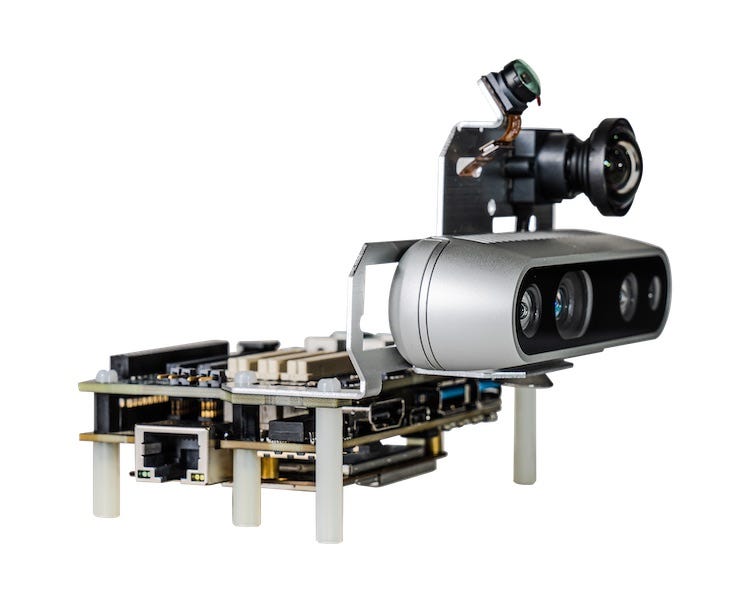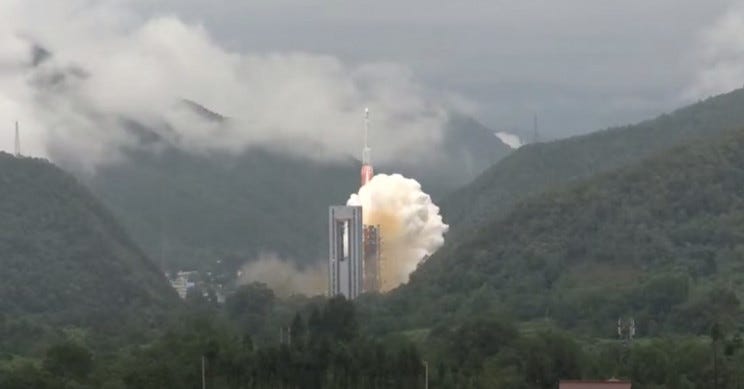This week we will look at a new Robotics Platform that should enable the development of a range of new applications. China has just launched the final satellite in their Global Positioning System program, the first x-ray map of the universe has just been completed and we visit Bons-AI, an AI driven talking plant.
5G, AI enabled Robotics Platform
Qualcomm has launched the world’s first 5G, AI integrated platform for companies to develop robotic capabilities. The platform provides an extensive set of hardware, software and development tools for companies to develop robotic applications.
Platforms such as this speed up development by eliminating the need to find, develop and integrate basic functionality of the desired system. The platform also provides an ecosystem for developers to build the necessary hardware and software to enable various robotic applications. There are already over 30 companies building for the platform.

Using specialized computer processors customized for robotic applications, a machine learning interface, a powerful image processor supporting 7 concurrent cameras and dedicated computer vision engine for video analytics the platform provides the tools needed for future robotics.
The platform is expected to enhance development of the next generation of autonomous mobile robots for delivery, inspection, inventory and industrial uses. Collaborative robots and unmanned aerial vehicles will lay the groundwork for future Unmanned Air Vehicles Traffic Management. The flying cars we were all promised by 2020 may soon be here.
China launches a rival to GPS
The GPS System that we all use everyday is actually owned by the US Military and it is currently operated by the US Space Force (the new military unit set up by Donald Trump, on a side note Netflix and Steve Carrell managed to trademark Space Force for their Netflix comedy beating the US Military to the punch). The GPS system consists of 24 satellites that were first launched in 1978. In the 1980’s Ronald Regan opened the system up to civilian use however the US Military still has the right to limit access at any time of their choosing.
Russia developed their GLONASS system at the same time as the US GPS however only had global coverage in the mid 2000’s. The European Union made their Galileo system operational in 2016. China began the launch of its’ competing system BeiDou in 2018 and last week launched the final satellite.

BeiDou means “Big Dipper” in Mandarin and uses a network of 55 satellites which carry atomic clocks (as do the competing systems) to improve Chinese navigation and timing. The Chinese Government sees BeiDou as a competitor and alternative to the US, European and Russian systems.
Smart Textiles that reduce body heat
Graphene is a sheet of carbon atoms just one atom thick. Graphene was first isolated at The University of Manchester in 2004. Scientists are only just beginning to discover the myriad of uses for Graphene.
Researchers at The University of Manchester have now developed smart adaptive clothing which can reduce body temperature of the wearer in hot climates. The human body radiates energy in the form of electromagnetic waves in the infrared spectrum (called blackbody radiation). If we block this infrared radiation we can minimize the energy loss from the body. This is the effect of Emergency Blankets that you see used after people are saved from freezing water.
The team was able to electrically tune the ability to radiate energy of graphene layers, which were then integrated onto textiles. This allowed transitioning between the two states of blocking and radiating the energy. Notice the difference in temperature of the patch on the shirt below when the system is on or off.

There are a range of potential uses for the technology including the maintenance of body temperature in areas where temperature ranges up and down in short periods (e.g. desserts which are hot during the day and cold at night). Adaptive space suits and textile displays as a fashion statement are also possible.
Previously the team has developed thermal camouflage that allowed them to fool thermal cameras. The next step for this research is to address the need for dynamic thermal management of earth-orbiting satellites. Satellites in orbit experience massive temperatures when the face the sun and they freeze in the earth’s shadow. Controlling thermal radiation and regulating the satellites temperature on demand will improve operational efficiency and longevity.
Bons-Ai the Talking Plant
Research has shown that talking to your plants can help them to grow. What if your plants talked back to you? Would you grow?
Now you can find out with Bons-AI an AI driven talking plant that will not only have a conversation with you, it will also inspire you with inspirational words of wisdom. The plant has wireless electricity supply, miniature speakers, a microcomputer, a base equipped with condensers and a flexible solar cell light censor and power supply.

Bosnia-AI will position itself so that it absorbs life giving sun rays. The axel sensor will allow the plant to remain stable while it maneuvers. A miniature camera is responsible for the plant’s movements and an LED panel will illuminate once the plant is in the correct sun soaking position.
Bons-AI is a great listener and one of it’s inspirational quotes might just be the tonic that you need to grow as a human (I’m fairly sure it won’t make you taller).
An X-ray image of the Universe
The eROSITA space telescope was launched in July 2019 and it has just now completed its’ first scanning of the entire sky, collecting observations in X-ray wavelengths.

X-rays are invisible to the human eye therefor specialized equipment is needed. Most astronomical objects emit x-rays which have very short wavelengths and thus high energy. The most energetic objects are things like black holes, neutron stars, quasar galaxies and supernova remains. As x-rays are mostly blocked by the Earth’s atmosphere we can only study them by sending telescopes into space.
This is the entire sky through x-ray eyes.

Most of the sources in the map (about 77%) are supermassive black holes. There are also clusters of galaxies, stars in the Milky Way with hot magnetically active coronae, bright x-ray binary stars, supernovas and flares emitted by stars being torn apart by black holes. The map also reveals the structure of the gas within the Milky Way and the gas that surrounds it.
Paying it Forward
If you have a start-up or know of a start-up that has a product ready for market please let me know. I would be happy to have a look and feature the startup in this newsletter. Also if any startups need introductions please get in touch and I will help where I can.
If you have any questions or comments please email me via my website craigcarlyon.com or comment below.
I would also appreciate it if you could forward this newsletter to anyone that you think might be interested.



They needed their own GPS. Imagine the Beijing traffic jams if the US switched off public GPS and only sent encrypted GPS just over China.